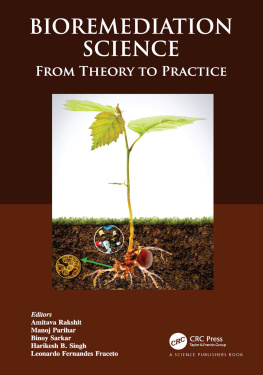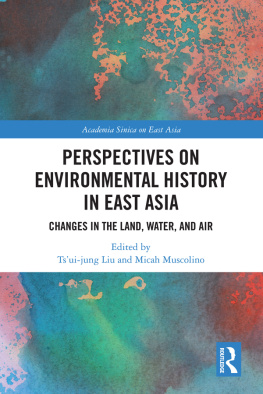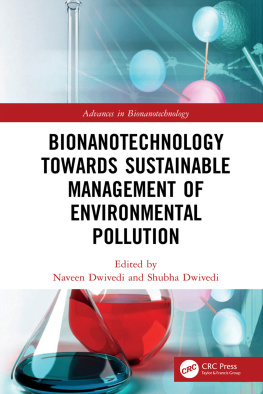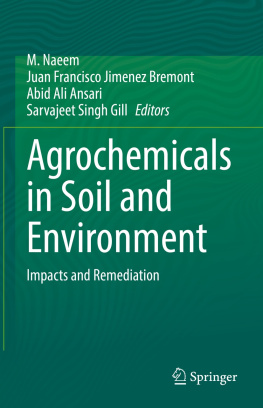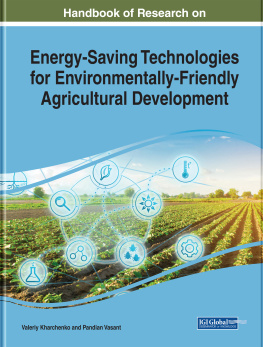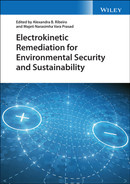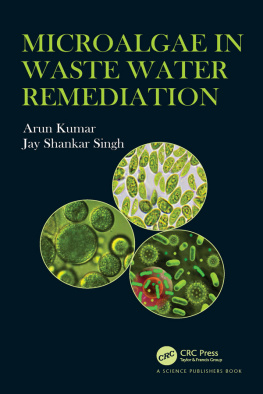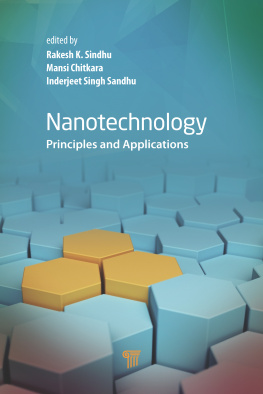
Bioremediation Science
From Theory to Practice
Editors
Amitava Rakshit
Department of Soil Science & Agricultural Chemistry
Institute of Agricultural Sciences
Banaras Hindu University
Varanasi, UP
India
Manoj Parihar
Crop Production Division
ICAR-Vivakananda Parvatiya Krishi Anusandhan Sansthan
Almora, Uttarakhand
India
Binoy Sarkar
Lancaster Environment Centre
Lancaster University
Lancaster
UK
Harikesh B. Singh
Retired Professor of Mycology and Plant Pathology
Institute of Agricultural Sciences
Banaras Hindu University
Varanasi, UP
India
Leonardo Fernandes Fraceto
So Paulo State University
Sorocaba, So Paulo
Brazil
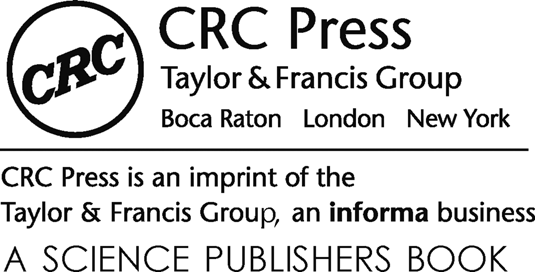
Cover credit: Image taken by editors from Pixbay and modified by them.
First edition published 2021
by CRC Press
6000 Broken Sound Parkway NW, Suite 300, Boca Raton, FL 33487-2742
and by CRC Press
2 Park Square, Milton Park, Abingdon, Oxon, OX14 4RN
2021 Taylor & Francis Group, LLC
CRC Press is an imprint of Taylor & Francis Group, LLC
Reasonable efforts have been made to publish reliable data and information, but the author and publisher cannot assume responsibility for the validity of all materials or the consequences of their use. The authors and publishers have attempted to trace the copyright holders of all material reproduced in this publication and apologize to copyright holders if permission to publish in this form has not been obtained. If any copyright material has not been acknowledged please write and let us know so we may rectify in any future reprint.
Except as permitted under U.S. Copyright Law, no part of this book may be reprinted, reproduced, transmitted, or utilized in any form by any electronic, mechanical, or other means, now known or hereafter invented, including photocopying, microfilming, and recording, or in any information storage or retrieval system, without written permission from the publishers.
Trademark notice: Product or corporate names may be trademarks or registered trademarks and are used only for identification and explanation without intent to infringe.
Library of Congress Cataloging-in-Publication Data
Names: Rakshit, Amitava, editor.
Title: Bioremediation science : from theory to practice / editors, Amitava Rakshit, Department of Soil Science & Agricultural Chemistry, Institute of Agricultural Science, Banaras Hindu University Varanasi, UP, India, Manoj Parihar, Crop Production Division, ICAR-Vivakananda Parvatiya Krishi Anusandhan Sansthan, Almora, Uttarakhand, India, Binoy Sarkar, Lancaster Environment Centre, Lancaster University, Lancaster, UK, Harikesh B. Singh, Retired Professor of Mycology and Plant Pathology, Institute of Agricultural Sciences, Banaras Hindu University, Varanasi, UP, India, Leonardo Fernandes Fraceto, So Paulo State University, Sorocaba, So Paulo, Brazil.
Description: First edition. | Boca Raton, FL : CRC Press, [2021] | Includes bibliographical references and index.
Identifiers: LCCN 2020039958 | ISBN 9780367343965 (hardcover)
Subjects: LCSH: Bioremediation.
Classification: LCC TD192.5 .B5577 2021 | DDC 628.5--dc23
LC record available at https://lccn.loc.gov/2020039958
ISBN: 978-0-367-34396-5 (hbk)
Typeset in Times New Roman
by Radiant Productions
Thankfully and lovingly dedicated to our wives and our children who motivated us to fly towards our dream
The introduction of human civilization and their progressive development has placed enormous pressure on environmental integrity. Unscientific disposal of waste released from industries, agriculture and domestic sources is posing a great threat to natural biodiversity and its existence. Therefore, there is an urgent need of diminution of hazardous pollutants and xenobiotics using economical, effective and viable alternative. In this regard, bioremediation offers a greater possibility to manage the wide range of potential toxic pollutants. Bioremediation includes plants, microbes and their enzymes in order to detoxify or degrade the heterogeneous and toxic substances to an innocuous state. Due to natural attenuation and cost effective feature, this approach provides an edge over other conventional methods. However, the long duration involved and inappropriate levels of residual contaminants render this technique ineffective, but technical expertise and considerable experience with appropriate design of bioremediation program can become the game changer that modern world needs. The continuous changes and evolution of new metabolic pathways have facilitated these microbes to degrade or detoxify the resistant and various heterogeneous pollutants present on this planet. In the last few years, research on bioremediation has received much attention and increased dramatically to develop a more effective and applied bioremediation process. However, this rapidly advancing field requires a multidisciplinary approach with up-to-date knowledge to broaden the perspective of researcher engaged in this field. In this book, we have tried to cover the current research development along with some new approaches, methods and management strategies for the abatement of contaminants present in soils, sediments, surface water and aquifers for the environmental conservation in a sustainable way. It offers new insights and perspectives for novices and experts as for students, academicians, teachers, researchers, environmentalists and other individuals interested in the field of bioremediation.
This book provides state of the art description of various approaches, techniques and some basic fundamentals of bioremediation to manage a variety of organic and inorganic wastes and pollutants present in our environment. The scope of this book extends to environmental/agricultural scientists, students, consultants, site owners, industrial stakeholders, regulators and policy makers with a holistic and systematic approach. It covers new development and recent advances in the field of bioremediation research within relevant theoretical framework to improve our understanding of the cleaning up of polluted water and contaminated land. The book is easy to read, and the language can be readily comprehended by aspiring newcomer, students, researchers and anyone else interested in this field.
Amitava Rakshit
Manoj Parihar
Binoy Sarkar
Harikesh B. Singh
Leonardo Fernandes Fraceto
We bow our appreciation to several enthusiastic hearts due to whose promise and devotion in the subject, we have been able to accomplish this gigantic job. Our profound sense of veneration and sincere thanks to the contemporaries and students who assisted us in our venture in bringing this book to light. Our sincere thanks also go to Prof. Mankombu Sambasivan Swaminathan for his immense impact, unwavering back-up and support. Thanks to everyone on my publishing team. Special thanks to Raju Primlani and Danielle Zarfati. Last but not the least we should thank our family, immediate and extended, who always encouraged us to continue the enormous task Finally, we thank all the people who have supported us to complete the task directly or indirectly.

